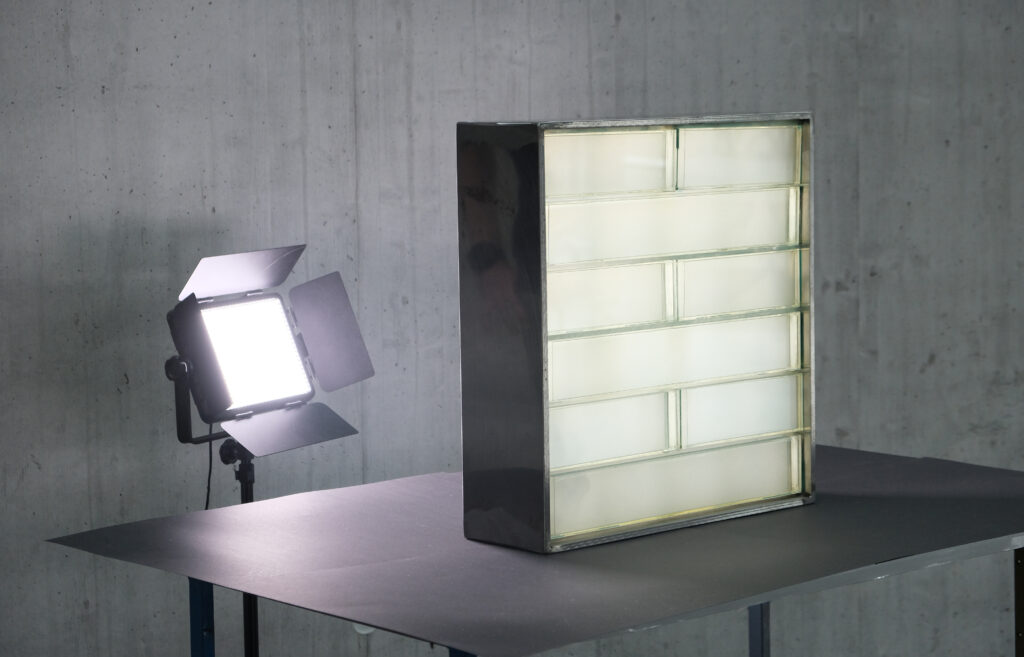


Glazed facades and building elements are popular in architecture when it comes to letting light into a building. This makes better use of daylight and requires less artificial and energy-consuming lighting. To maximise this advantage, entire walls of the building envelope should be made of glass elements if possible. However, this requires that the elements have effective thermal insulation and can bear a certain load – a combination that has not been available on the market so far.
The Swiss Federal Laboratories for Materials Testing and Research (Empa) has now developed glass bricks filled with translucent aerogel granules that enable the construction of aesthetically pleasing and load-bearing facade elements with large areas of daylight. The Empa researchers have achieved the combination of strength, insulation and light transmission through staggered spacers between the glass panes within the glass brick, which ensure static stability with minimal heat transmission. The aerogel glass brick is suitable for applications where high daylight input, glare protection and privacy protection are required at the same time. The coupling to daylight can also have a positive effect on the daily rhythm of the building residents. This applies to offices, libraries and museums as well as to foyers, staircase cores, gymnasiums, multi-purpose halls, residential buildings, hospitals and sanatoriums, but also to zoos, stables and greenhouses.
Silicate aerogels are high-performance thermal insulation materials that are becoming increasingly common in the building sector. The most common are non-transparent insulation mats and plasters. In 2017, Empa researcher Jannis Wernery and his colleagues from the ,,Building Energy Materials and Components” department had the idea of integrating the insulating material directly into a building brick and presented a new type of brick filled with aerogel, the so-called “Aerobrick”. Thanks to its excellent thermal insulation, it saves heating costs without an additional insulation layer applied to the masonry. Since aerogel can also be almost transparent, a translucent, insulating building system has now also become possible. With a measured thermal conductivity of 53 mW/(m∙K) and a compressive strength of almost 45 MPa, the aerogel glass brick reportedly has the highest insulating performance of any brick found in the technical literature, let alone on the market. The innovative glass bricks are also said to be competitive in terms of material costs. The researchers have applied for a patent for the aerogel glass brick and are looking for possible partners in industry.
More on ndion
Discover more articles on the topic of design and innovation.
Share this page on social media:

